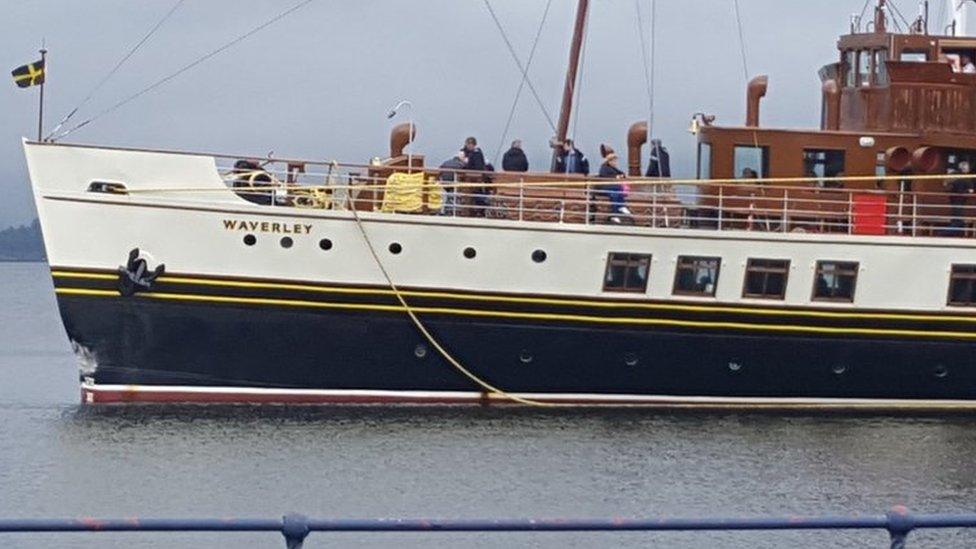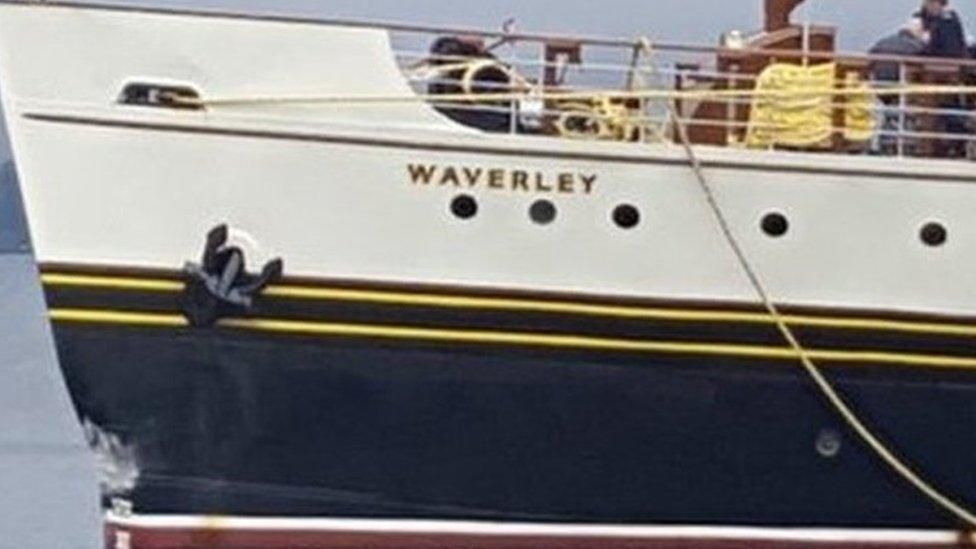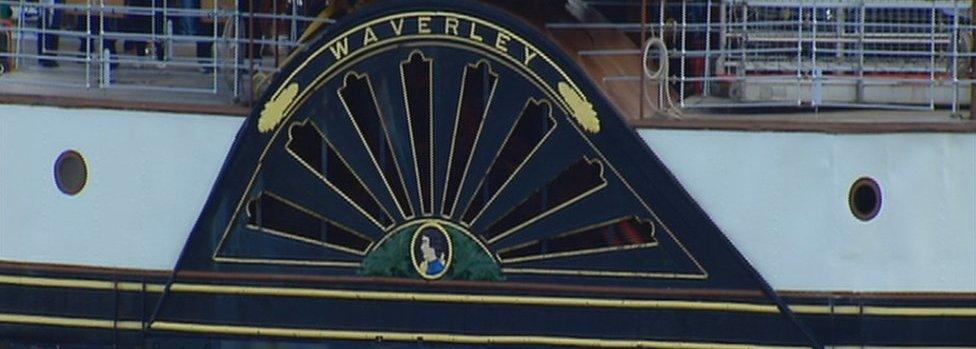Clyde cruises cancelled after Waverley crashes into pier
- Published

The Waverley crashed near the seafront promenade
The world's last sea-going paddle steamer has been damaged after it struck the pier at Rothesay in the Firth of Clyde.
The Waverley was on a regular passenger-carrying trip when the incident took place at about 14:30. No-one was injured.
Crew and officers assessed the damage to the bow and the day-trippers were returned home by ferry.
Passengers have been told all weekend cruises will be cancelled.

Damage could be seen just above the waterline following the bump
The steam ship, which was launched in 1946, is operated by a charity, the Waverley Steam Navigation Company.
A spokesman for Waverley Excursions said: "On departure from Rothesay on Friday, an incident occurred in which damage was sustained to Waverley's bow.
"As Waverley requires to enter dry dock for repair, the weekend's Clyde sailings will now not be operating.
"Passengers have been informed and asked to return their tickets for a refund.
"Waverley will be back in service as soon as repairs have been completed."
A Coastguard spokesman said: "The Waverley collided with the pier at Rothesay at 2.32pm.
"It sustained some damage to the bow of the vessel. No-one was injured."


The Waverley - facts and figures
Built by A. & J. Inglis of Glasgow and launched in October 1946.
Entered service with the London and North Eastern Railway in June 1947, working LNER's Firth of Clyde steamer route from Craigendoran Pier, near Helensburgh, to Arrochar.
Powered by a three-crank diagonal triple-expansion marine steam engine built by Rankin & Blackmore in Greenock.
Now painted in original LNER 1947 livery of red, white and black funnels, traditional brown-grained (or "scumbled") superstructure and black paddle-wheel boxes.
July 1977 - badly damaged when she struck rocks near Dunoon. The heavier than normal post-war construction which made provision for possible future military use as a minesweeper may have helped her stay together while she was refloated.
June 2009 - struck the breakwater at Dunoon with 700 passengers on board, 12 of whom suffered minor injuries.
Since being sold to the Paddle Steamer Preservation Society, she has carried more than five million passengers.
- Published16 June 2017
